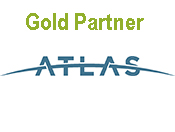|
Highlights from FY '13 Notice of Audit Findings - Nature and Extent As part of the Loss Prevention Committee's (LPC) topic-based continuing series of reviews of 2013 Notices of Audit Findings (NOAFs), this article presents highlights from NOAFs that address issues involving the nature and extent of contamination. The observations below are intended as practice tips for the LSP community. Given that the LPC will present a subsequent article devoted to vapor intrusion-related NOAFs, this article does not describe vapor intrusion issues, although these are a leading component of identified noncompliance within nature and extent-related NOAFs. GENERAL ISSUES OF SITE CHARACTERIZATION Provided below are some examples of the nature and extent issues cited by MassDEP in NOAFs, such as sampling parameters, assessment of historical usage, and lateral and vertical contaminant delineation.
GROUNDWATER CLASSIFICATION MassDEP identified several instances of noncompliance relating to the assignment of groundwater classifications:
DISPOSAL SITE BOUNDARIES MassDEP identified lack of or inadequate definition of disposal site boundaries in the following cases:
CLEAR AND CONSISTENT DESCRIPTION OF SITE AND RESPONSE ACTIONS In some cases, MassDEP determined that RAOs did not present clear and consistent depictions of site conditions and response actions, and therefore did not provide a convincing rationale for closure. In one example, MassDEP concluded that the RAO did not present:
In another example, MassDEP determined that an RAO's disposal site boundaries had been reduced from a larger property that included a GW-1 Medium Yield Potentially Productive Aquifer as shown in the Phase II Report, to a more limited GW-2/GW-3 area defined by the extent of soil removal performed during a RAM. The RAO provided no explanation for the reduced boundaries. EVALUATION OF NON-POTABLE SUPPLY WELLS As part of one NOAF, MassDEP cited four non-potable private wells located within 500 feet of a disposal site for which the RAO did not provide adequate justification to exclude them from within the disposal site boundaries. Although the NOAF allowed that non-consumptive use of the private wells did not by itself require a GW-1 classification, MassDEP stated that non-potable use requires a Method 3 Risk Characterization to evaluate exposures not addressed by the RAO's Method 1. The NOAF went on to state that the RAO did not provide an adequate description of the locations, depths, and construction details of these wells. METHANOL PRESERVATION AND HISTORIC SAMPLES An NOAF for a 2012 combined Phase II/Phase III Report found that characterization of the site source area relied on 1997 VOC soil results with no indication that the samples had been preserved with methanol, as currently required per Policy WSC#99-415. MassDEP concluded that use of data from unpreserved samples inadequately characterized soil impacts and was therefore noncompliant. COMPLIANCE WITH TSCA Notification had been provided to MassDEP of a potential imminent hazard for 2,800 mg/kg PCBs detected in surface soil. The soil was later removed during three separate excavations. MassDEP noted in the NOAF that EPA was not notified and response actions did not comply with TSCA regulations. This noncompliance with TSCA was identified by MassDEP a violation of the MCP. SUBSEQUENT PROPERTY TRANSFER DUE DILIGENCE REPORT In a situation experienced by many LSPs over the past few years, MassDEP issued an NOR as a result of a Level 3 Audit eight years following submittal of a Class A-2 RAO. The audit and subsequent NOR were prompted by a due diligence assessment report submitted by a third party to MassDEP. The report detected soil and groundwater impacts above the Method 1 criteria that had been used to support the RAO. The assessment also detected soil vapor constituents above MassDEP's threshold values for VOCs. MassDEP required retraction of the RAO and Tier Classification within one year.
|

































